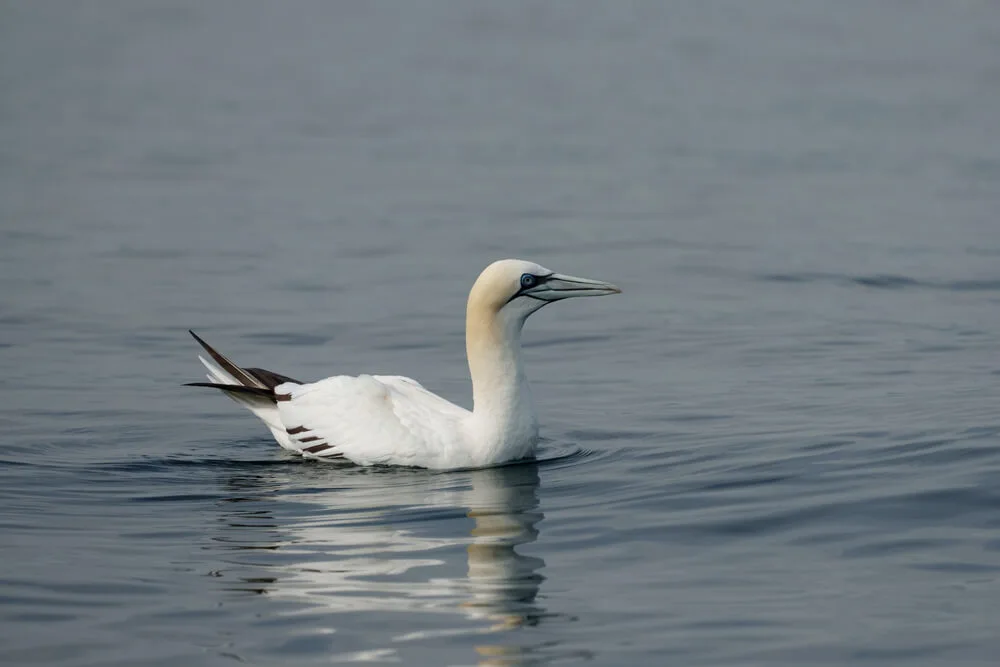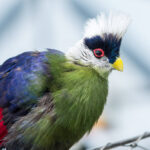Water diving birds are species of birds that dive into the water to catch food, but also to escape predators.
Some of these birds enter the water from flight, while others jump from the surface. They’re also some of the best swimming birds.
In this article, we’ll be taking a closer look at 13 types of water diving birds.
- Brown Pelicans
- Cormorants
- Red-throated Loons
- Common Loons
- Pacific Loons
- Grebes
- Penguins
- Peregrine Falcons
- Auks
- Terns
- Kingfishers
- Gannets
- Seagulls
Note: The birds are ranked in no particular order.

1. Brown Pelicans

Scientific name: Pelecanus occidentalis
Brown pelicans are one of two pelican species found in North and South America that feed by plunging into the water.
They primarily feed on fish, and there’s no other way of obtaining fish but by plunging into the water.
They can spot schools of fish at heights of 70 feet. After spotting prey, they’ll dive in with their bill breaking the surface of the water.
If it catches a fish, a pelican will firstly spill the water from the bill, only then swallow the fish.
The only other pelican species that does this is the Peruvian pelican – other pelican species swim on the water and simply stick their bill under the surface to forage fish.
2. Cormorants

Scientific name (family): Phalacrocoracidae
Cormorants don’t feed exclusively on fish, but also on eels and snakes. They’ll usually dive from the surface while swimming, although they can dive from flight like pelicans do.
When diving, this black bird that swims underwater will use its well-developed feet to swim, but some species also use their wings.
Some of these birds are capable of reaching truly astonishing depths of up to 260 feet below the surface!
Water does penetrate their feathers, but it doesn’t reach their skin, so they dry themselves off very quickly.
Cormorants are one of the only two species of water diving birds in the UK.
3. Red-throated Loons

Scientific name: Gavia stellata
Red-throated loons often use their wings to accelerate underwater, sometimes reaching 30 feet in depth. They can spend up to a minute below the surface, which gives them plenty of time to catch fish.
Aside from fish, these loons will also feed on frogs, mollusks, and even insects. Young loons are incapable of hunting, so their parents have to catch small fish to feed them.
It can take months for red-throated loons to start catching fish on their own.
4. Common Loons

Scientific name: Gavia immer
These water diving birds of North America (they are found in Europe too, but the largest population is found in North America) are capable of diving up to 200 feet in depth.
They’re great divers and swimmers, but they’re very clumsy on land as their legs have adapted for swimming.
They’ll dive out of the air or while swimming and chase fish below the surface. Because they’re such fast swimmers, fish usually can’t outmaneuver them and they don’t stand a chance against these birds.
Unlike pelicans, they usually swallow their prey below the water.
5. Pacific Loon

Scientific name: Gavia pacifica
Although group behavior has been documented with other loon species, Pacific loons often forage in groups. They form a hunting party and swim below the fish, forcing them towards the surface.
Once the fish have nowhere else to go, they become easy prey for the loons. Unlike other loons, they usually don’t swim far away from shore.
6. Grebes

Scientific name (family): Podicipedidae
With over 20 species, grebes are widespread around the United States and Canada, and they’re some of the most common water diving birds in Michigan, among other places.
There are species of grebes that are completely flightless, which means that the only way to escape predators is to dive underwater.
Even species that are capable of flight show reluctance and they prefer water to air.
Their feathers are waterproof and they’re capable of floating on water by pressing their feathers against the body. In fact, they can adjust the buoyancy at will.
They usually swim with only their neck and head sticking out. Their dives last less than half a minute, and they focus on catching small fish and frogs.
7. Penguins

Scientific name (family): Spheniscidae
Out of all birds, penguins have, without a doubt, adapted to aquatic life the best.
Although they’re still birds, their wings have evolved into flippers and they’re completely incapable of flight. However, they’re as capable in the water as most birds are in the air.
They’re very clumsy on the ground, though.
Gentoo penguins are the quickest diving birds, reaching speeds of 22 MPH at depths of up to 660 feet. Emperor penguins can dive the deepest, reaching 1,800 feet during hunting.
Aside from the adaptations they made to their wings, penguins also have a layer of air within their plumage (plumage is a layer of feathers), preventing them from losing temperature when swimming in the freezing waters.
8. Peregrine Falcons

Scientific name: Falco peregrinus
Peregrine falcons are known as the fastest birds in the world, as well as the fastest animals in the world.
During their high-speed dives, these falcons are capable of reaching speeds greater than 200 MPH. The greatest dive speed ever recorded was 242 MPH!
In theory, a falcon could reach 250 MPH in low-altitude flights and an astonishing 388 MPH in high-altitude flights.
Despite these diving abilities, peregrine falcons don’t necessarily feed on fish. Some falcons live their entire lives without ever eating fish.
Since they’re so incredibly quick, they feed on whatever they want because no animal in the world can outrun them.
9. Auks

Scientific name (family): Alcidae
Auks are often compared to penguins, and with good reason. They’re both families of black and white diving birds that propel themselves through the water with their wings, as well as their feet.
These birds are quick swimmers that mostly hunt slow-moving krill. They can dive more than 300 feet in depth, with cormorants as their only competition in the wild.
If their areas overlap, auks will hunt prey that’s further offshore.
10. Terns

Scientific name (subfamily): Sterninae
Terns are well known as divers. They’ll firstly hover above the water and only dive once the prey has been spotted.
In a biome-crossing type of symbiosis, they’ll sometimes team up with porpoises that drive smaller fish towards the surface.
However, they don’t feed exclusively on fish – they’ll often grab insects, lizards, amphibians, and even mice. They’re not as efficient at underwater hunting as other species on this list.
Terns can’t keep their eyes open underwater, so they have to rely on the last image they have before they dive.
11. Kingfishers

Scientific name (family): Alcedinidae
Aside from fish, kingfishers often feed on amphibians, reptiles (including snakes), worms, and insects, which is impressive given how small these birds are. They’re even known to feed on small mammals and other birds.
They usually hunt in shallow rivers and streams – they look at the water from above and lunge at the located prey. Kingfishers open their beak and close their eyes when they make contact with water.
Once they return to the ground with the fish, they’ll kill it by hitting it against something solid. They swallow birds head first, only after gil spines of the fish relax.
12. Gannets

Scientific name (genus): Morus
Gannets mostly feed on fish and they’ve made several adaptations to become better divers. Unlike most other birds, they lost their external nostrils and can only breathe through the mouth.
Gannets also developed air sacs in the face and chest which cushion the blow once they break the surface of the water.
Their eyes are also more forward than to the sides, achieving binocular vision, unlike most other birds.
They dive up to 200 feet and are incredible swimmers, while they also plunge at speeds of up to 60 MPH, which helps with the depth of the dive.
13. Seagulls

Scientific name (family): Laridae
Seagulls will more often dive when they’re swimming than when they’re flying, as they don’t necessarily rely on fish to feed.
Since they can’t dive as well as some other water diving birds, they wait for large marine hunters to drive the smaller fish towards the surface and catch them when they’re right below.
Despite their great swimming abilities and aquatic life adaptations, they can’t dive very deep.
Final Thoughts
Almost all water diving birds made adaptations to their feathers, feet, and wings to be able to dive. Some species, such as penguins, have completely adapted to aquatic life and are more similar to fish than they are to birds, at least when it comes to swimming.
Most diving birds can hold their breath for at least 30 seconds and they can reach depths that are unimaginable to humans. Some birds, such as the peregrine falcon, smash into the water at incredible speeds – stunning the fish and reaching great depths just because of the speed at which they dove in.











